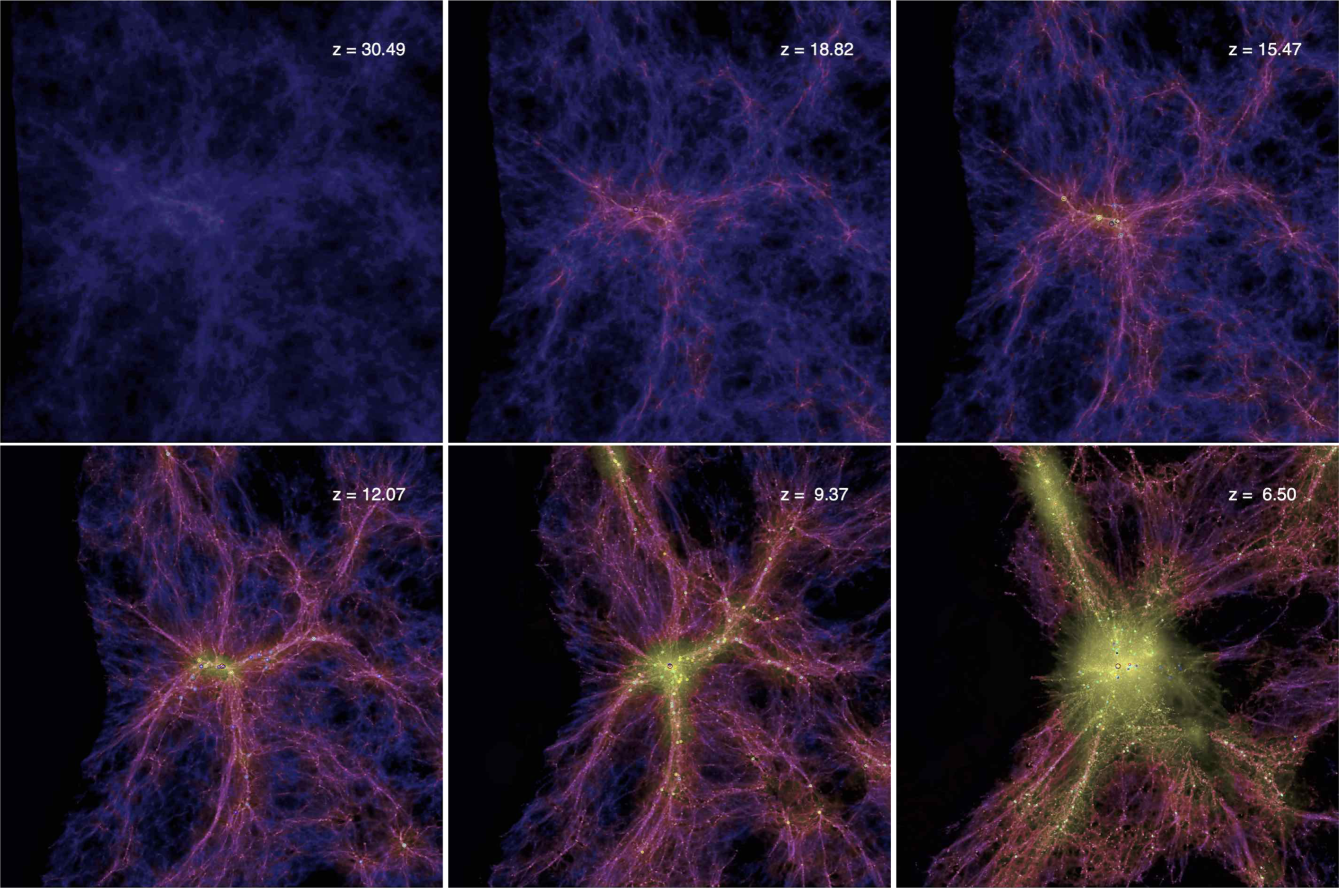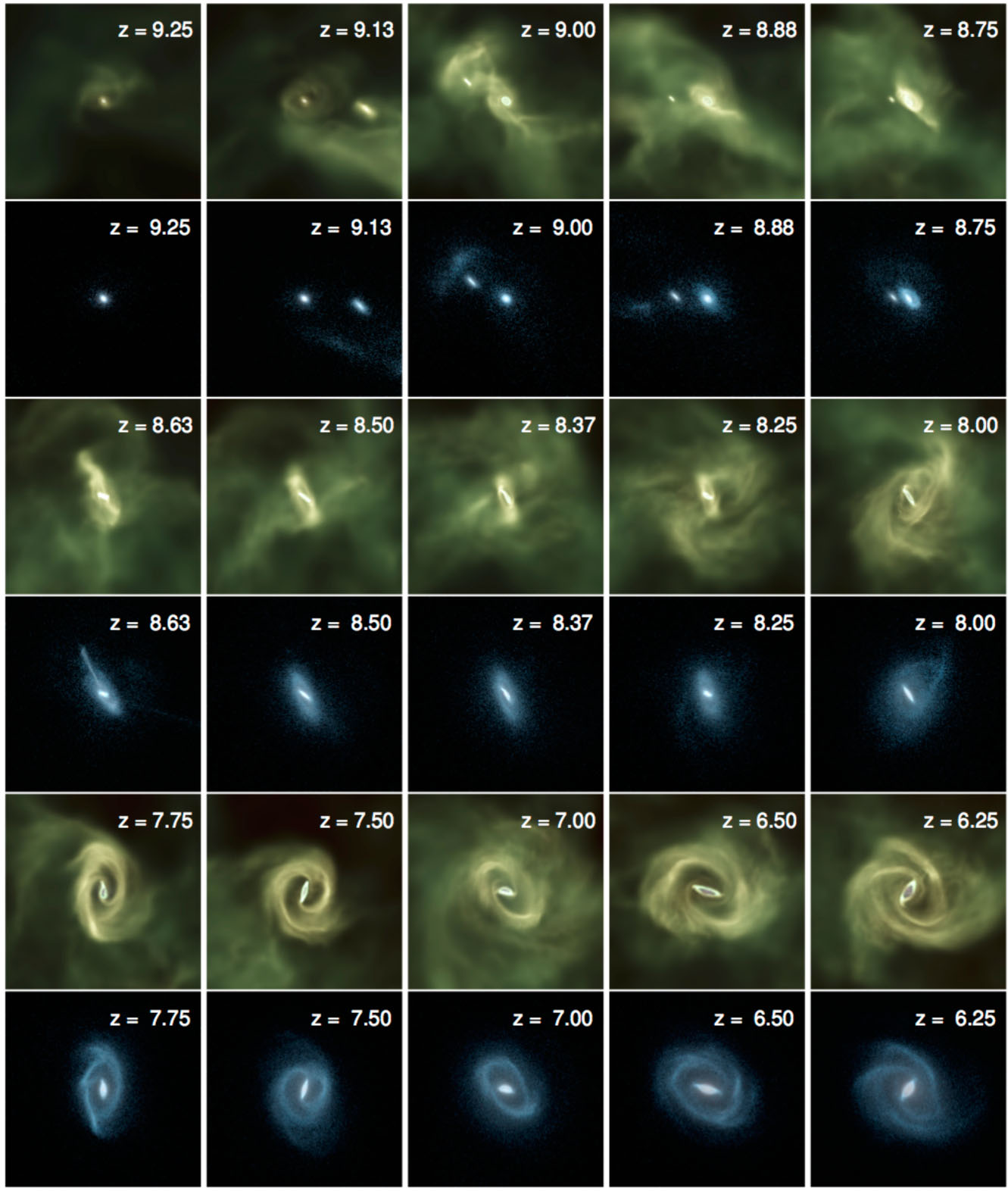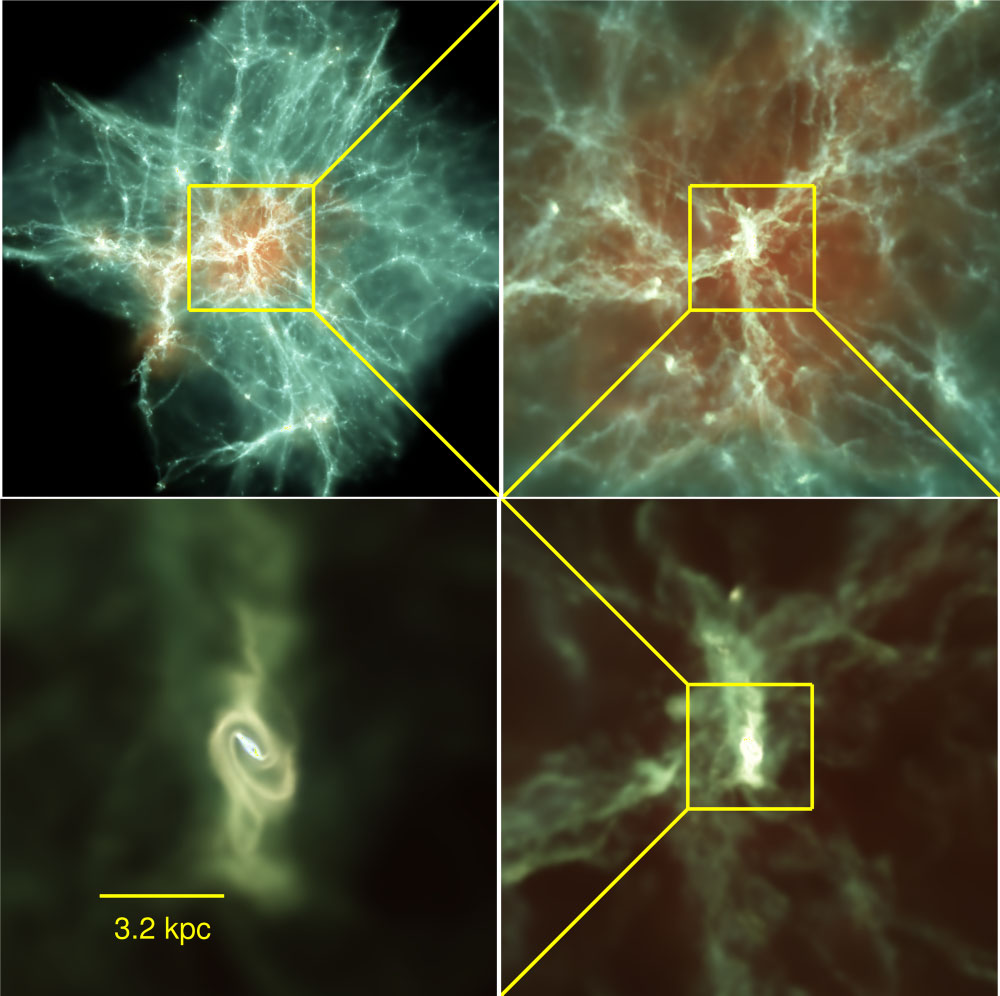Achievements & Publications
The formation of the first quasars: the black hole seeds, accretion, and feedback models
Zhu, Qirong, Li, Yuexing, Li, Yiting, Maji, Moupiya, Yajima, Hidenobu, Schneider, Raffaella, & Hernquist, Lars
Abstract
Supermassive black holes (SMBHs) of ~ 109 M⊙ are generally believed to be the central engines of the luminous quasars observed at z ≳ 6, but their astrophysical origin remains elusive. To investigate the formation of these distant quasars, we perform a suite of zoom- in simulations on a favourable halo, with a mass of ~ 1013 M⊙ at z = 6 and a history of multiple major mergers, ideal for BH growth. We test BH seeds of 10- 106 M⊙, and various accretion and feedback models, including thin-disc and slim-disc accretion. We find that abundant gas supply and efficient angular momentum transport by gravitational torques are critical to BH accretion, and that the final BH mass depends strongly on the seed mass and radiative efficiency which in turn depends on feedback model. In our simulations, heavy seeds of rsim104 M⊙ can grow rapidly to SMBHs of 108 - 109 M⊙ by z ~6 in both thin and slim disc accretion models, provided that the duty cycle of near-Eddington accretion with an Eddington ratio λEdd ≳ 0.6 is maintained at rsim40 per cent. In particular, for a 105 M⊙ seed, both our fiducial model and the supercritical accretion model with no spin produce bright quasars with SMBHs of ~ 109 M⊙ at z ~7.5. On the other hand, the light seeds of ≲ 103 M⊙ failed to grow to 108 M⊙ by z ~6 in our simulations. We caution that the results are inconclusive due to limitations of our numerical methods and physical models, and we stress the need for further investigations on the growth of BH seeds with more advanced methods.






 和 英
和 英